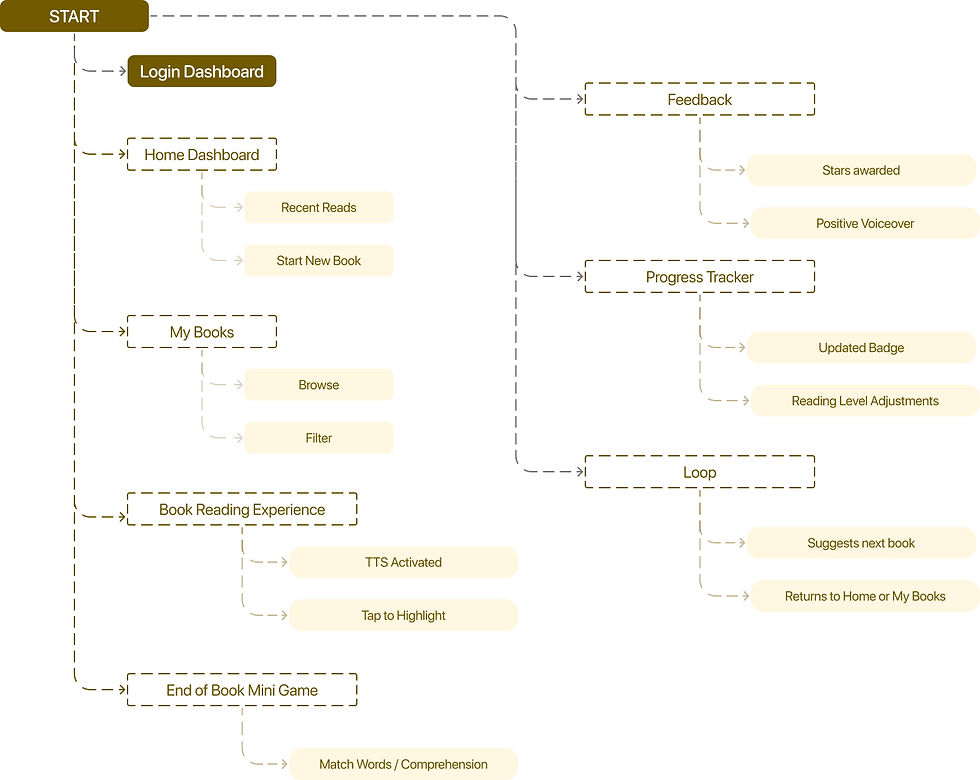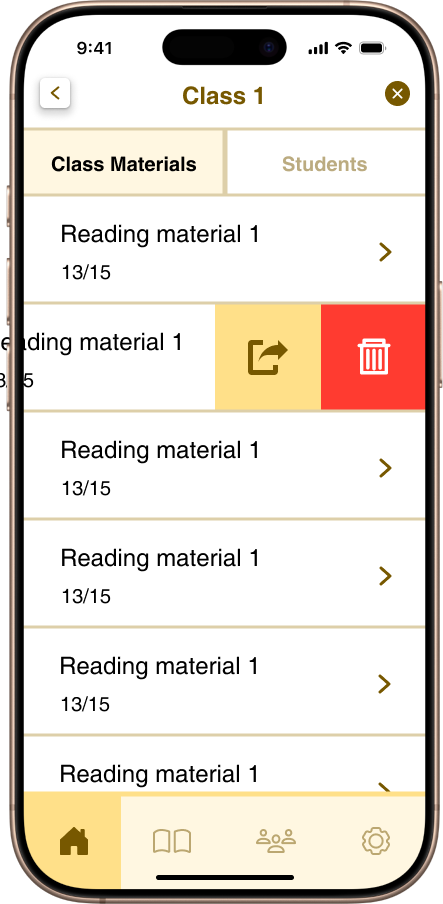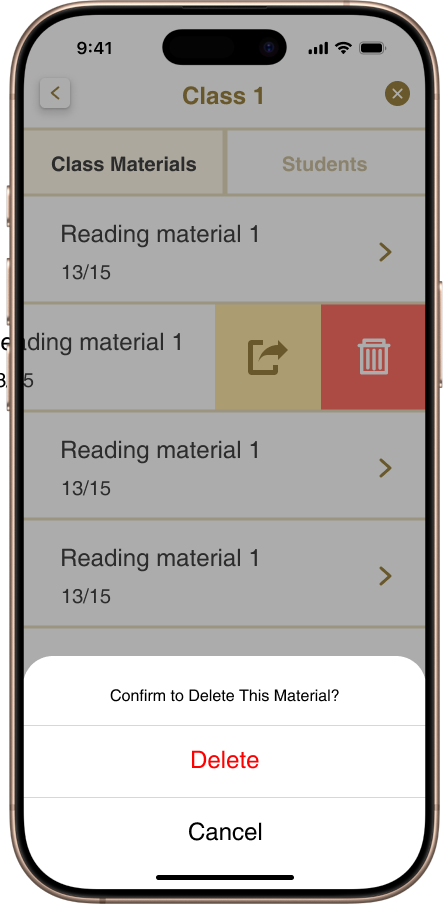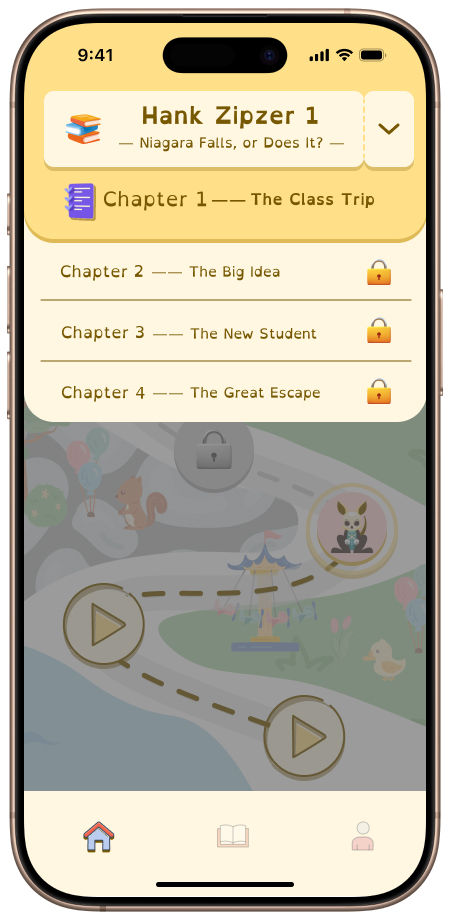Readaroo - Designed for Different Thinkers
An AI-powered Reading App for Children with Dyslexia
Designing accessible, gamified reading experiences for young readers.

6 Members
My Role: Product Concepting, Experience Design, and UI flows
10 Weeks

A purpose-driven app designed to support children with dyslexia by integrating AI, gamification, and multi-sensory tools for an inclusive, engaging reading experience.

Overview
Readaroo is a multi-sensory, AI-powered platform tailored for children under 12 with dyslexia. With a dual-mode interface for students and teachers, Readaroo enables inclusive, playful, and effective reading comprehension through auditory, visual, and tactile engagement.
Problem Space
Children with dyslexia often face confusion and frustration while processing written content. Despite early signs, they lack access to engaging, personalized reading support, impacting self-confidence, learning outcomes, and long-term growth.
Reading Confusion
Children struggle with letter recognition and word processing
Emotional Impact
Frustration and decreased self-confidence in learning
Lack of Support
Limited access to personalized, engaging learning tools

We crafted a thoughtful structure and flow that guides both teachers and students effortlessly through the app, ensuring intuitive navigation, simplified interactions, and minimal learning friction.

Listening to the Voices that Matter
Through student and teacher interviews, we uncovered real struggles dyslexic children face, informing every step of our design.
5 Teachers
with 16-32 years experience were interviewed
80% Teachers
believe poverty exacerbates challenges
10% (≈780M)
global population has dyslexia
Navigating with Purpose
Laying the foundation for a seamless journey, from diagnosis to progress tracking.

Early Diagnosis is Crucial
The sooner children receive support, the better their long-term outcomes and confidence in learning.

Teachers need Tools
Educators want tools that help track progress and personalize content for individual students.

Gamification Works
Dyslexic students thrive with gamification and clear, structured learning environments.

Manageable Content
Students need short, manageable, multi-format reading materials to avoid overwhelm.


A quick walkthrough of our intuitive, multisensory reading platform designed to support young dyslexic learners and their teachers.
Early Exploration
Low-fidelity wireframes helped us quickly visualize ideas, test layouts, and iterate on content flow


















Visual Language
Our style guide defined a warm, accessible, and engaging visual system, designed to support readability for children with dyslexia while maintaining clarity for educators.




Dual Mode Experience
Distinct, role-based user journeys for students and teachers, each tailored with age-appropriate interfaces and functionality to support their specific needs.



Students sign up using a class code and receive a dashboard focused on gamified learning and rewards.



Teachers input school, class, and subject details to manage student groups effectively.
Gamified Learning
Interactive word, phonics, and reading games with reward systems including coins and badges to motivate engagement.














Personalized Profiles: Students can personalize their profiles with customizable avatars, themes, and accessible fonts tailored for dyslexia, enhancing both engagement and cognitive comfort.




Motivation through rewards: A gamified system of coins, badges, and streak trackers motivates students to stay engaged and consistently interact with the app.





Learners visually navigate their reading path through intuitive checkpoints that simplify comprehension. Real-time feedback on levels, streaks, and badges helps them recognize achievements and stay motivated throughout their learning journey.
Customizable Accessibility
Progress Tracking


Readaroo offers a seamless, responsive experience across phones and tablets, ensuring accessibility anywhere. Its cross-device consistency supports learning both at home and in classrooms without disruption.
Validating our Design with Real Users
Conducted iterative user testing sessions to ensure accessibility, ease of use, and emotional resonance for both students and teachers.
5 Teachers
with 16-32 years experience
6 Students
with dyslexia diagnosis
Content Adaptation
Adding content specifically designed for younger readers
Group Features
Enabling group gameplay and teacher announcement tools
Personalized Experience
Users responded positively to features that let them tailor their reading interface
Designing for Confidence, Not Just Competence